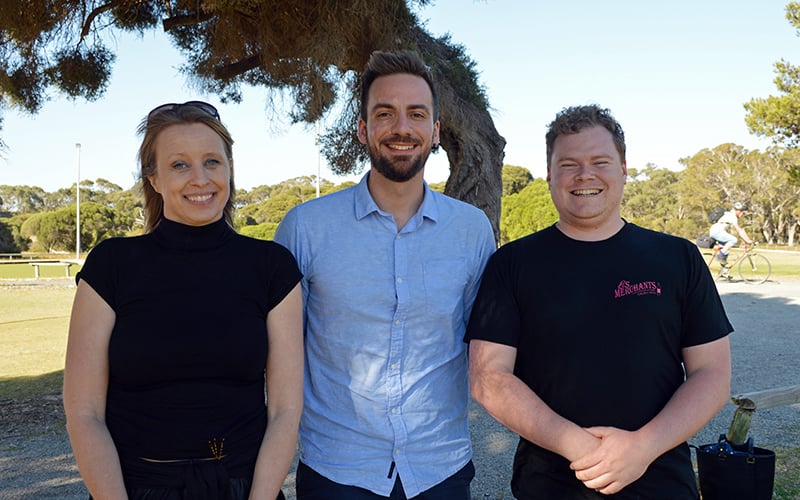Search
Research
Increasing airway obstruction through life following bronchopulmonary dysplasia: a meta-analysisFew studies exist investigating lung function trajectories of those born preterm; however growing evidence suggests some individuals experience increasing airway obstruction throughout life. Here we use the studies identified in a recent systematic review to provide the first meta-analysis investigating the impact of preterm birth on airway obstruction measured by the forced expiratory volume in 1 s (FEV1) to forced vital capacity (FVC) ratio.
Research
COVID-19 monitoring with sparse sampling of sewered and non-sewered wastewater in urban and rural communitiesEquitable SARS-CoV-2 surveillance in low-resource communities lacking centralized sewers is critical as wastewater-based epidemiology (WBE) progresses. However, large-scale studies on SARS-CoV-2 detection in wastewater from low-and middle-income countries is limited because of economic and technical reasons.
Research
Complete Genomes of Three Pseudomonas aeruginosa Bacteriophages, Kara-mokiny 1, Kara-mokiny 2, and Kara-mokiny 3Here, we present the complete genome sequence of Pseudomonas aeruginosa phages Kara-mokiny 1, Kara-mokiny 2, and Kara-mokiny 3. These phages have lytic capabilities against P. aeruginosa and belong to the myovirus morphotype. The genomes of Kara-mokiny 1 and Kara-mokiny 2 are 67,075 bp while that of Kara-mokiny 3 is 66,019 bp long.
Research
AI-Driven Cell Tracking to Enable High-Throughput Drug Screening Targeting Airway Epithelial Repair for Children with AsthmaThe airway epithelium of children with asthma is characterized by aberrant repair that may be therapeutically modifiable. The development of epithelial-targeting therapeutics that enhance airway repair could provide a novel treatment avenue for childhood asthma.
Research
Biodiesel Exhaust Toxicity with and without Diethylene Glycol Dimethyl Ether Fuel Additive in Primary Airway Epithelial Cells Grown at the Air-Liquid InterfaceBiodiesel usage is increasing steadily worldwide as the push for renewable fuel sources increases. The increased oxygen content in biodiesel fuel is believed to cause decreased particulate matter (PM) and increased nitrous oxides within its exhaust.
Research
Change in health outcomes for First Nations children with chronic wet cough: rationale and study protocol for a multi-centre implementation science studyIn children, chronic wet cough may be a sign of underlying lung disease, including protracted bacterial bronchitis (PBB) and bronchiectasis. Chronic (> 4 weeks in duration) wet cough (without indicators pointing to alternative causes) that responds to antibiotic treatment is diagnostic of PBB. Timely recognition and management of PBB can prevent disease progression to irreversible bronchiectasis with lifelong consequences. However, detection and management require timely health-seeking by carers and effective management by clinicians.
Research
BAL Inflammatory Markers Can Predict Pulmonary Exacerbations in Children With Cystic FibrosisPulmonary exacerbations in cystic fibrosis are characterized by airway inflammation and may cause irreversible lung damage. Early identification of such exacerbations may facilitate early initiation of treatment, thereby potentially reducing long-term morbidity. Research question: Is it possible to predict pulmonary exacerbations in children with cystic fibrosis, using inflammatory markers obtained from BAL fluid?
Research
Microbiomic Analysis on Low Abundant Respiratory Biomass Samples; Improved Recovery of Microbial DNA From Bronchoalveolar Lavage FluidIn recent years the study of the commensal microbiota is driving a remarkable paradigm shift in our understanding of human physiology. However, intrinsic technical difficulties associated with investigating the Microbiomics of some body niches are hampering the development of new knowledge. This is particularly the case when investigating the functional role played by the human microbiota in modulating the physiology of key organ systems. A major hurdle in investigating specific Microbiome communities is linked to low bacterial density and susceptibility to bias caused by environmental contamination.
Research
Western Australia Paediatric Bronchiectasis CohortBronchiectasis is a chronic lung disease that impairs quality of life and reduces life expectancy.

News & Events
Wal-yan Centre inaugural Shark Tank winnersCongratulations to Dr Montgomery, Dr Iosifidis and Dr D’Vaz on winning the Wal-yan Centre's inaugural seed funding competition.
